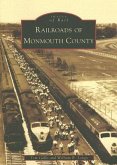Philadelphia became the railroad capital of the world in the 1830s when 12 distinct lines opened within a 100-mile radius of the city to carry people and freight. The railroad boom in the 19th century was made possible by the development of rural communities surrounding the city, the Industrial Revolution, excellent access to raw materials, and an influx of European immigrants. Philadelphia manufactured locomotives, railroad track, and other rail components and exported them around the world. The ability to move agricultural goods, manufactured products, and people commuting from home to work helped to unite the 27 boroughs, districts, and townships into one metropolis by 1854. Philadelphia Railroads features many unseen images and rare photographs documenting the leaders of Philadelphia's transportation world.








